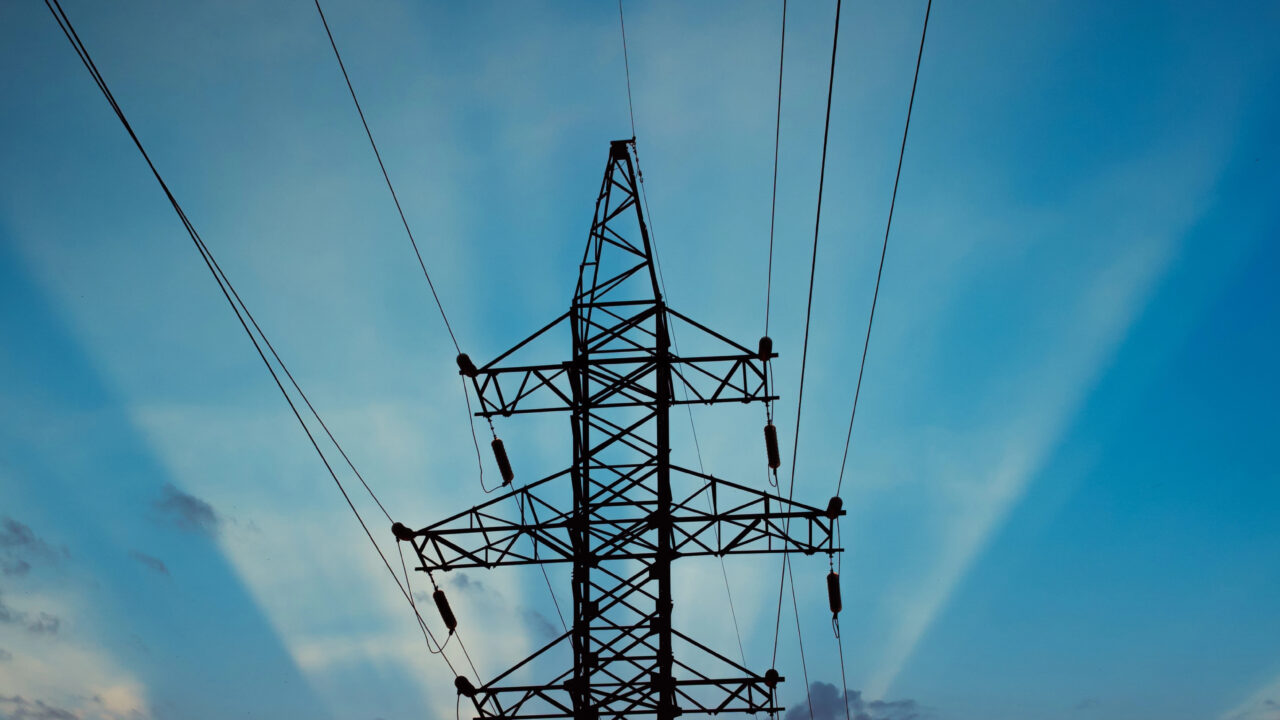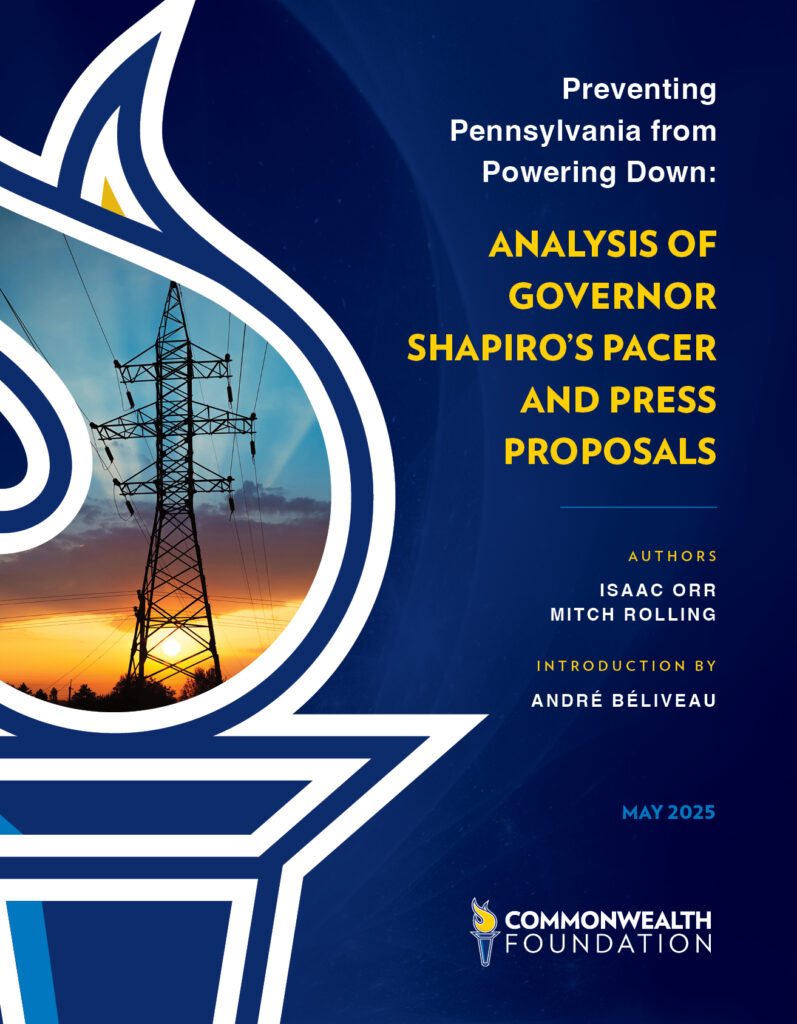Report

Preventing Pennsylvania from Powering Down: Analysis of Governor Shapiro’s PACER and PRESS Proposals
Key Findings
The Price Tag: Governor Shapiro’s Pennsylvania Climate Emissions Reduction Act (PACER) and Pennsylvania Reliable Energy Sustainability Standard (PRESS) proposals would impose $157.2 billion in new electricity costs on Pennsylvanians through 2035—$155 billion from PRESS compliance and $2.2 billion from PACER, even after a 70 percent rebate.
The Electricity Rate Hike: Under PACER and PRESS, electricity prices would surge from 12.58 cents per kilowatt-hour (kWh) in 2023 to 20.17 cents per kWh by 2035, a 60 percent increase that would hit Pennsylvanian families, small businesses, and manufacturers alike.
More than Double Electric Bills: Annual electricity costs would rise by $1,754 for households, $5,554 for commercial businesses, and $178,620 for industrial customers—undermining affordability and economic competitiveness.
Impact on Household Electric Bills: Pennsylvania families would see their annual electricity costs rise from $1,717 in 2023 to $3,471 in 2035—an increase from $143 to $289 per month. That means the average household bill would more than double, rising 102 percent by 2035 under PACER and PRESS.
Massive Overbuild of Intermittent Capacity: PRESS mandates nearly triple Pennsylvania’s power plant capacity—from 45.5 gigawatts (GW) to 124 GW by 2035—driven almost entirely by wind, solar, and battery storage. This immense buildout is not to meet rising consumer demand but to compensate for the intermittency of solar and wind, imposing massive costs for capacity that the grid would not need for dispatchable or baseload energy sources.
Emissions Costs Far Exceed Claimed Benefits: Carbon dioxide (CO₂) reductions under PACER and PRESS are two times higher than the estimates of climate benefits outlined under the Biden administration’s Social Cost of Carbon (SCC), delivering a net economic harm to Pennsylvania.
Executive Summary
Pennsylvania is the third-largest producer of electricity in the country and the nation’s largest electricity exporter, exporting 35 percent of the electricity it produces.[1] As a result, Pennsylvania’s current fleet of natural gas, nuclear, and coal power plants plays an indispensable role in maintaining the reliability of the electric grids operating within the Eastern United States.[2]
However, policies proposed by Pennsylvania’s Gov. Josh Shapiro and other lawmakers to reduce carbon dioxide (CO2) emissions from the electricity sector and spur the development of alternative energy resources, such as wind turbines, solar panels, and battery storage facilities, would require substantial changes to the Keystone State’s generating portfolio.
These policies include the Pennsylvania Climate Emissions Reduction Act (PACER) and the Pennsylvania Reliable Energy Sustainability Standard (PRESS).
PACER would establish a Pennsylvania-specific cap-and-trade system to tax CO2 emissions from the power sector to reduce greenhouse gas emissions. PRESS would require 50 percent of Pennsylvania’s electricity to come from alternative energy sources such as wind, solar, battery storage, advanced nuclear power plants such as small modular reactors (SMRs), “clean” hydrogen, carbon capture and sequestration on coal or natural gas plants, biomass, geothermal, and more, by 2035.[3]
The findings in this report show that, if enacted, PACER and PRESS would cost Pennsylvania an additional $157.2 billion through 2035 as a result of higher electricity prices, with $155 billion as the result of PRESS compliance and $2.2 billion as a result of PACER due to the 70 percent rebate of taxes collected in the law. Without this refund, PACER would cost Pennsylvania families and businesses $7.2 billion. These calculations exclude the impact of federal subsidies because subsidies do not reduce the price of a good or service; they simply shift who pays for it.
The high price tag for these policies would hit Pennsylvania electricity customers hard. Across sectors, PRESS and PACER would cause electricity rates to increase from 12.58 cents per kilowatt-hour (kWh) in 2023 to 20.17 cents per kWh in 2035—a 60 percent increase.
The result of implementing PACER and PRESS: Pennsylvania families would see their annual electricity costs increase from $1,717 in 2023 to $3,471 in 2035, an increase of $1,754 per year or $146 per month.
Always On Energy Research (AOER) used a variety of publicly available data sources to formulate the assumptions in this report, including the U.S. Energy Information Administration (EIA) assumptions on the annual energy outlook, hourly grid monitor, and the State Energy Profile for Pennsylvania. The Appendix provides a more detailed explanation of these assumptions.
[1] U.S. Energy Information Administration, “Pennsylvania: State Profile and Energy Estimates, Profile Analysis,” January 16, 2025 [update], https://www.eia.gov/state/analysis.php?sid=PA.
[2] Kathy Hitchens, “What is PJM and What Does It Do?” PCI Energy Solutions, January 3, 2024, https://www. pcienergysolutions.com/2024/01/03/what-is-pjm-and-what-does-it- do/#:~:text=Today%2C%20PJM%20has%20evolved%20 into,more%20than%2065%20million%20people.
[3] Rep. Danielle Friel Otten, House Bill 2277, Pennsylvania General Assembly, Regular Session of 2023–24, https://www.legis.state.pa.us/CFDOCS/Legis/PN/Public/btCheck. cfm?txtType=PDF&sessYr=2023&sessInd=0&billBody=H&billTyp=B&billNbr=2277&pn=3081.
